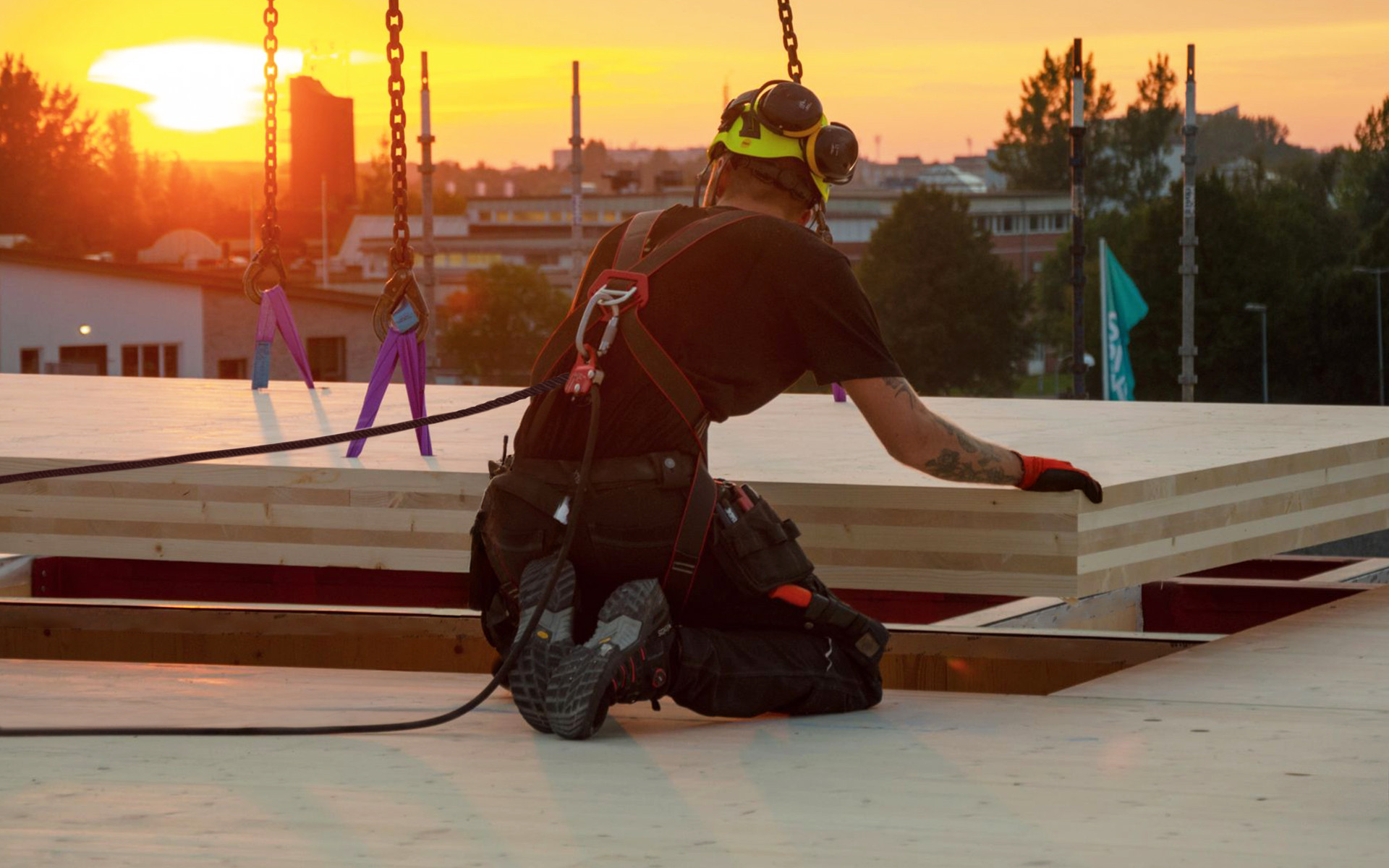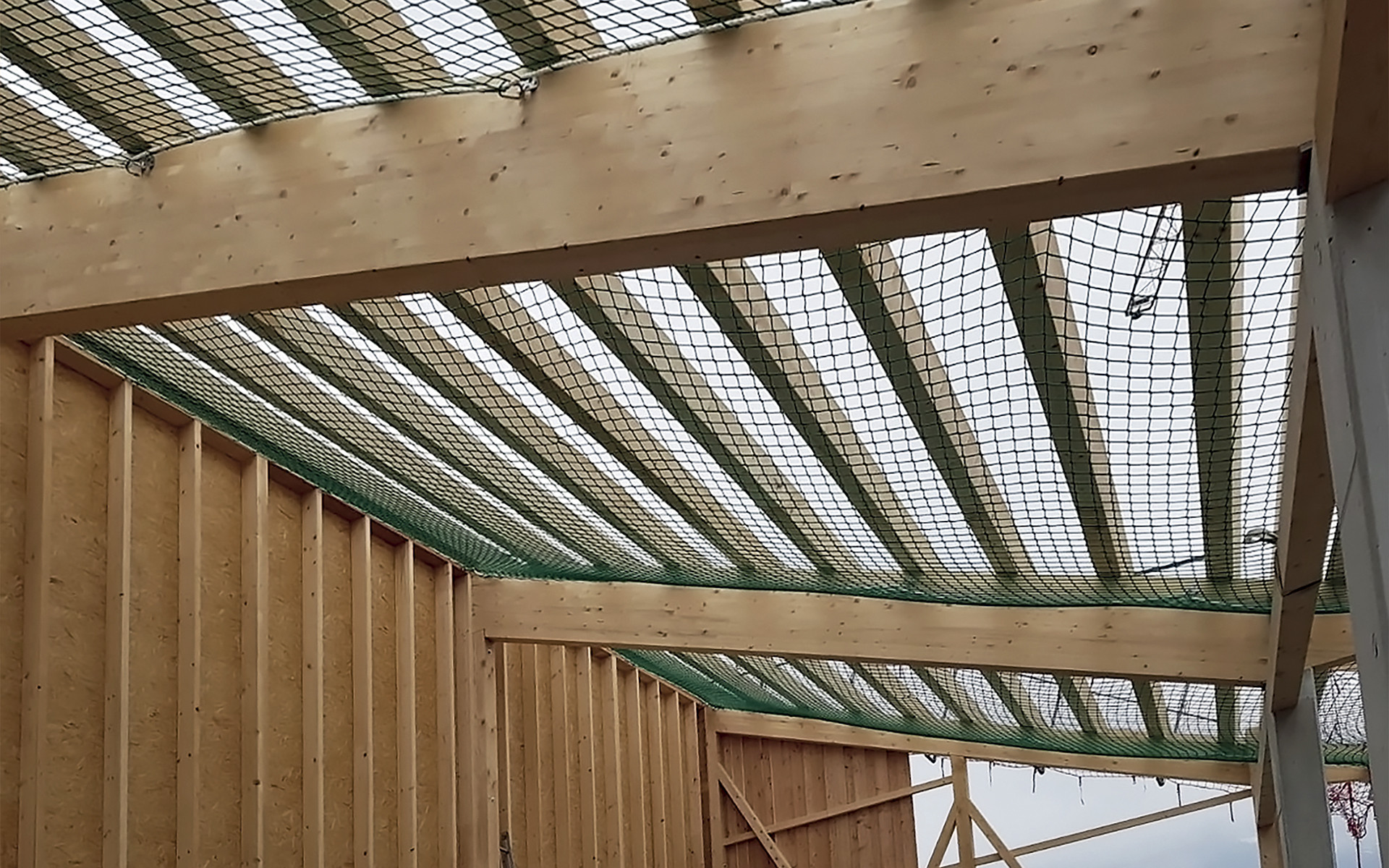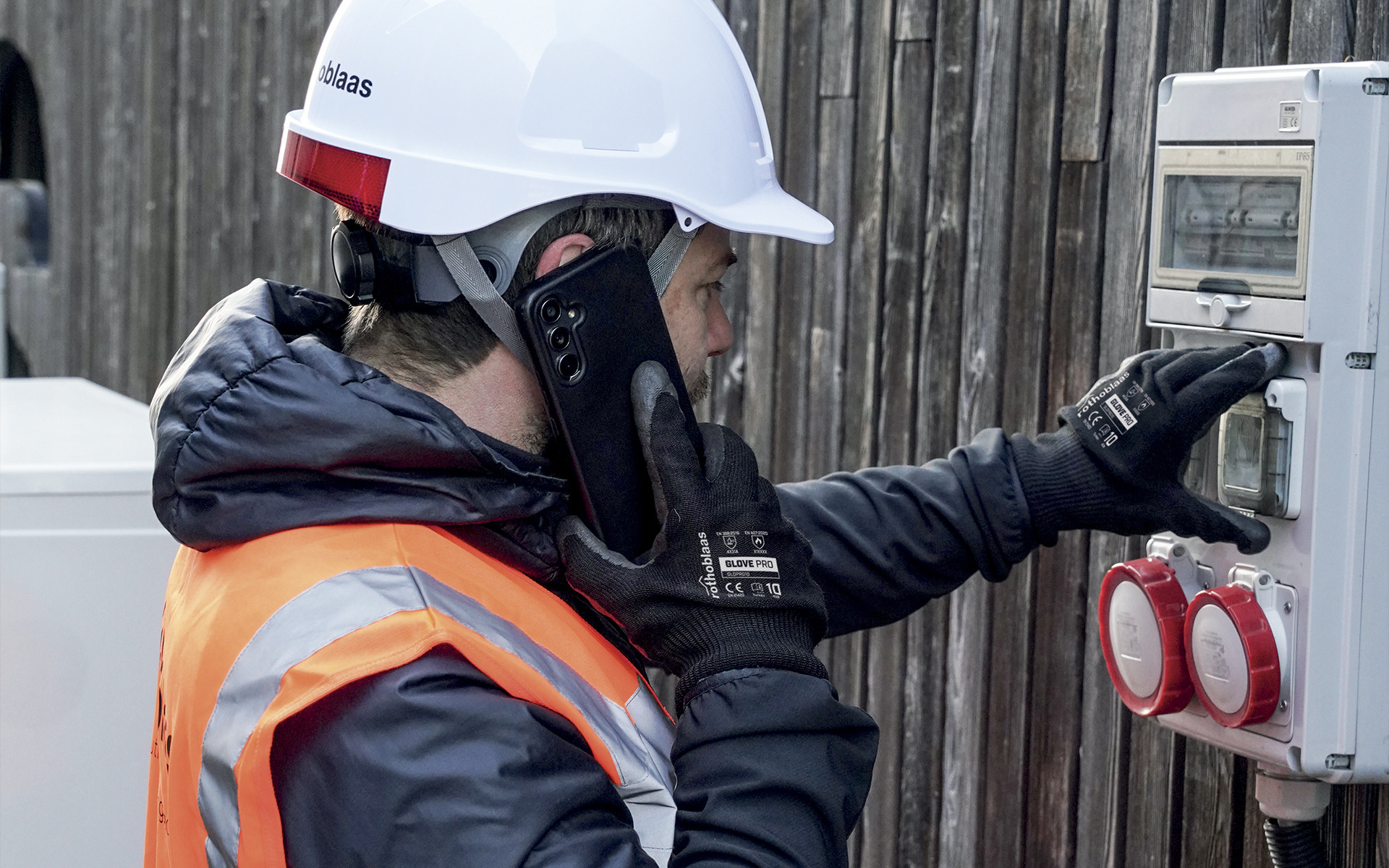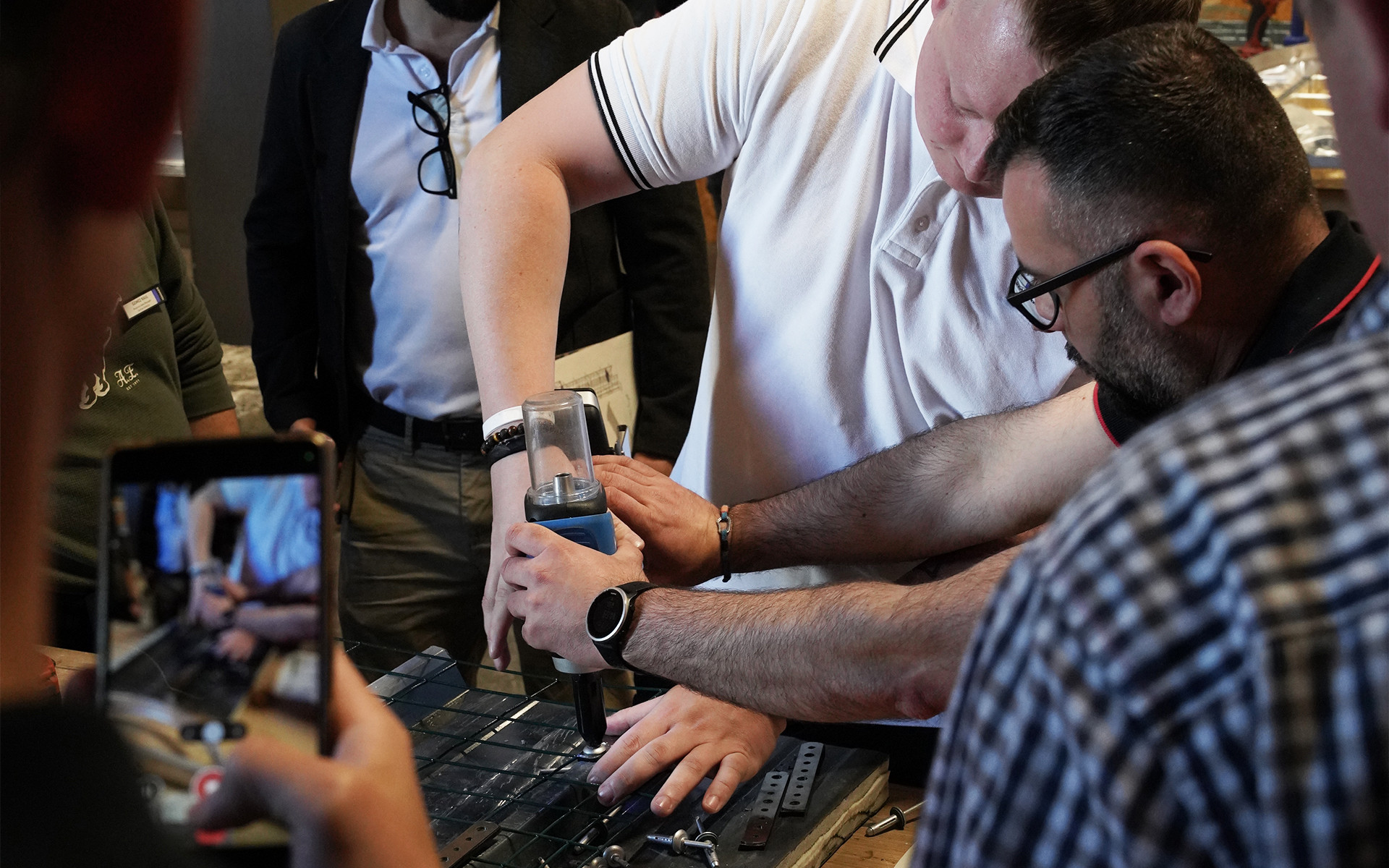
Safe work at height: operator protection and project continuity
What are the essential regulatory requirements when working at height?
In Italy, Article 111 of Legislative Decree 81/2008 prioritises collective safety measures, such as temporary or permanent railings and fixed or temporary fall protection nets. When these cannot be implemented, the use of individual fall arresters becomes mandatory: a work helmet (EN 397), work harness (EN 361, EN 358, EN 813) and anchor systems compliant with UNI EN 795, which sets requirements for both fixed-point and linear anchor systems.
An integrated approach combining a ladder for safe roof access, PPE and collective safety systems, in addition to a structured training and maintenance program, can significantly enhance protection, minimise residual risks, improve efficiency and reduce the likelihood of site shutdowns due to accidents.
Risks involved in work at height
Laying a floor slab with wide-spaced boards and no railing? A typical scenario in construction sites. In conditions like these, the main risks faced by workers include:
Absence or removal of collective safety systemsRailings and fall protection nets are the first line of defence. If removed to facilitate lifting or assembly operations, they leave “exposed areas” where a split-second distraction can lead to serious accidents.
Incorrect use of PPE
In the rush to finish installing a skylight, an operator might attach their work harness to the wrong anchor point – a minor error, but one that renders the fall arrester useless in case of a fall.
Non-compliant access points
Climbing a makeshift ladder rested against a pitched roof can turn into a high-risk scenario: slippery rungs, uneven slopes and the absence of handrails all greatly increase the chance of a fall.
Lack of maintenance and regular inspections
Even the best fall protection solutions – lifelines, hooks and railings – can deteriorate due to weather exposure and mechanical stress. Without scheduled inspections and replacements, the strength of fall protection systems may degrade to the point of being ineffective.
Addressing these issues with tested solutions and a structured maintenance plan is the first step towards making work at height genuinely safer.
Collective safety systems: railings, nets and lifelines for construction sites at height
At many stages of a construction project, collective protection is the first line of defence: creating a continuous perimeter that prevents workers from approaching critical areas without a barrier.
Railings
Temporary or permanent railings such as EDGE TEMP, BORDER or GUARD can be anchored to the structure with or without screws, avoiding the need to pierce the roof. They easily adapt to complex geometries and different construction materials (timber, concrete, metal), effectively eliminating “exposed areas”.
Fall protection nets
Fall protection nets also play a key role during works on sloped or horizontal surfaces with skylights. With their quick unrolling and easy fixing, nets such as OVERNET or ROLLNET are ideal for covering large areas without needing to be frequently replaced, effectively addressing maintenance requirements and the critical need for rapid on-site assembly. For works near roof edges and scaffolding, where a distance of just one metre can turn a single step into a serious risk, a vertical fall protection net like VERTICAL NET serves as a protective wall, installed by threading the mesh onto the scaffolding poles or using optional straps. On surfaces under construction where external scaffolding or externally fastened perimeter protections cannot be installed, FRAME NET supports the net on a lightweight frame, securing even the most sensitive areas. When protection is needed for roofs under construction, HORIZONTAL NET is a modular system particularly well suited to large surface areas.

Lifelines and anchor points
When working along roof ridges or edges, such as during gutter finishing, temporary lifelines become essential. HOLD SYSTEM is a horizontal temporary anchoring device that can be quickly installed by a single operator, making it ideal when laying roof tiles or finishing gutters. The universal anchor point AOS is designed and tested to support up to three operators at once, making it ideal for team operations on both flat and pitched roofs. When working on steel structures, ROD becomes the go-to anchor point. Made from AISI 316 stainless steel, it is secured to tubular or profiled elements, providing a localised support point for mobile lifelines or positioning ropes, eliminating the need for a continuous system.
By integrating railings, nets, lifelines and anchor points, a protective shell is created around the worksite at height, supporting every stage of the job, minimising exposed areas and allowing operators to focus on their tasks rather than the risks.
PPE: helmets, harnesses and accessories for work at height
When environmental or logistical constraints prevent the immediate installation of collective safety systems, PPE comes into play, designed to arrest falls before they become accidents. Proper use of personal protective equipment is essential in a wide range of situations, not only during active construction but also during “simpler” tasks, such as skylight inspections, gutter and channel cleaning or work on low-pitched roofs.
Rothoblaas has developed a range of helmets and harnesses designed for a variety of applications, without compromising on comfort, even during long shifts.
Work helmets
The HERO helmet, certified to major standards (EN, ANSI, AS/NZS), is suitable for work at height, construction sites or industrial environments. Featuring ventilation channels to improve airflow and reduce heat stress, it is lightweight and engineered to adapt to any environment and conditions. It is compatible with earmuffs, headlamps and sun visors, and protects against impacts and objects falling from height. Alongside the POP helmet, which is less accessorised but equally effective, it forms an essential part of the PPE required for working at height.
Work harnesses
When collective safety systems are not yet in place, or when specific support is needed for positioning or fall arrest, a work harness is a must-have. From installing timber roofs, skylights and roof windows to mounting railings, applying waterproofing membranes or performing any other task on site, Rothoblaas MAIA and HESTIA harnesses enhance safety and streamline operations at height.
Thanks to strategically positioned anchor points and padded waist and leg supports, HESTIA keeps the operator securely anchored when fastening timber beams or installing skylights, while ensuring full hand mobility and a high level of comfort. With MAIA, the operator’s torso stays perfectly aligned with the suspension point, reducing forced tilting and evenly distributing the load along the spine in the event of a fall arrest.
Accessories
A harness alone offers limited protection unless the connectors and energy absorbers meet the same high standards.
The STRAP retractable fall arrester (EN 360) is designed for quick transfers across decking or internal ladders. With its fall-activated brake, it keeps the webbing under constant tension, freeing the hands during transitions between levels or when approaching a work area. It is ideal, for example, when accessing a skylight without interruptions to the anchor system.
During scaffold assembly or dismantling, the SCAFFOLD DUO double-arm fall protection lanyard combines fall arrest (EN 360) and positioning (EN 358) functions in a single device. One connection is all it takes to switch from "brake" mode to "sit" mode, simplifying set-up operations and reducing reconfiguration times.

Training and maintenance – ensuring consistently effective equipment
In Italy, Article 37 of Legislative Decree 81/2008 requires employers to provide specific training on PPE and fall protection systems, ensuring each operator is able to:
identify hazards related to working at height
wear helmets and harnesses correctly
check anchor systems and protections before use
respond promptly in case of an emergency or malfunction
During Rothoschool’s classroom and on-tour training courses, participants perform hands-on inspections of anchor points, simulate lifeline reconnections and learn to assess the stability of railings and nets, minimising user errors that too often lead to accidents.
Alongside training, a periodic inspection program ensures all safety systems remain in optimal condition:
Annual inspections of lifelines, nets and railings to check for wear, corrosion and component tension
Yearly checks on harnesses and lanyards, including inspection of stitching, anchor points and buckles
Site logbook, mandatory documentation used to certify the compliance of equipment and record any replacements or repairs
An approach that combines targeted training with scheduled maintenance turns each device into a reliable ally: site safety no longer depends on luck, but on proper procedures and regular inspections that ensure performance and peace of mind on the job.

Work at height remains one of the most dangerous tasks in the construction industry. According to Eurostat data, in 2022 the construction sector in Europe recorded 2,961 non-fatal injuries per 100,000 workers – the highest rate across all economic sectors. Also in 2022, nearly a quarter (22.9%) of all fatal workplace accidents in Europe occurred on worksites. Globally, the International Labour Organization estimates that at least 108,000 construction workers lose their lives each year due to falls from height, accounting for around 30% of all occupational fatalities in the sector.
These figures highlight the urgent need to adopt effective measures to protect the lives and health of workers.
Access the full technical specifications for Rothoblaas railings, nets, lifelines, helmets and harnesses: DOWNLOAD THE COMPLETE CATALOGUE.
All rights reserved
Technical Details
- Year:
- 2025
- 国家:
- Any
- 产品:
- EDGE BORDER OVERNET ROLLNET VERTICAL NET FRAME NET HORIZONTAL NET HOLD-SYSTEM® AOS ROD HERO POP MAIA HESTIA STRAP SCAFFOLD DUO EDGE TEMP 1 EDGE TEMP 2 EDGE TEMP 3 EDGE TEMP 4 GUARD H GUARD M GUARD V | GUARD VD GUARD W GUARD Z




